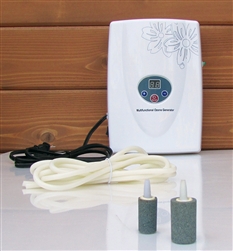 Whether because you’re following a strict Paleo diet, eating out too much, eating a lot of processed foods at home or simply aren’t paying attention to what you eat very closely, you’re probably consuming more Omega 6 fatty acids than you should and less of the crucial Omega 3 fatty acids that you need for optimal health.
Whether because you’re following a strict Paleo diet, eating out too much, eating a lot of processed foods at home or simply aren’t paying attention to what you eat very closely, you’re probably consuming more Omega 6 fatty acids than you should and less of the crucial Omega 3 fatty acids that you need for optimal health.
Consider this: a single handful of almonds gives you all the Omega 6 fatty acid you need for the day, and getting more can be bad for your health. Yet this substance is found in a variety of meats, cheeses and other foods as well as most fried and processed foods.
How can you make adjustments that lead to a more balanced life? Simple changes, as it turns out, can make a real difference when you understand what the goal is.
Our Diets Have Changed Slowly And Dramatically
Our diet has changed dramatically from what our ancient ancestors ate. And even in the last few generations, the diet has changed further — and not for the better. In recent years, the ratio of consumption of Omega 6 to Omega 3 polyunsaturated fatty acids has changed. We’re now eating too much Omega 6 and not enough Omega 3 in most cases.
A lot has been written about this topic, yet many people still don’t understand why this imbalance matters or what you can do about it.
But it’s possible to decrease your consumption of Omega 6 and start to bring things back into balance. Some diet plans make that hard, however. For example, the CrossFit nutritional guidelines tell you to eat lots of vegetables and greens as well as lean meats and plenty of nuts and seeds. But what should you have for snacks, according to their guidelines? A popular choice is almonds. And it’s not uncommon for people to use almond meal instead of grains for pizza crusts and other breads. Yet almonds are very high in Omega 6. Just three handfuls of these powerful nuts offer you 12 grams of Omega 6.
Many recommend getting no more than 6 to 10 grams of Omega 6 all day long, however. So what are you to do? Stop dieting? Getting discouraged doesn’t help, does it?
It’s relatively easy, however, to bring things back into balance if you’re vigilant. A good first step is to replace sources of Omega 6 oils with monounsaturated fats like olives and olive oil, avocado, macadamia nuts and the health saturated fats like coconut oil.
You can also start eating more fish and seafood to bring up your Omega 3 intake. Taking fish oil supplements help too. Just make sure you choose a fish oil that smells fresh and clean and has been tested for oxidation.
Make It A Two-To-One Ratio
Ideally, you should add Omega 3 fatty acids to your diet until you reach a 2:1 ration of Omega 6 to Omega 3 fatty acids. Bringing down your consumption of Omega 6 fatty acids will also help bring this ratio into balance.
To reduce Omega 6, start by cutting processed foods from your diet. Then cut back on eating out. Why? Because unhealthy oils are cheap, so they’re likely to be used at restaurants and in processed foods.
While few people still cook with unhealthy oils, you can go over the optimal ratio in no time by eating out and consuming foods that are cooked or processed with:
– Sunflower oil
– Cottonseed oil
– Sesame oil
– Canola oil
– And other high-Omega 6 oils.
You can assume that if you regularly eat out or eat a lot of food from boxes or packages, you’re eating more Omega 6 than you should — probably greatly more than you should.
Further Complications To Staying In Balance
Even worse is the fact that many people have problems converting and using Omega 3 fats from plant sources like walnuts and flax seeds. For that reason, consuming seafood and taking fish oil supplements may be the only way for some people to come into better balance.
If you think about it, throughout the 4 to 5 million years that humans have been evolving on the planet, our diet was usually rich in seafood and other sources of long chain EPA and DHA and relatively low in substances that contain Omega 6 fats.
When our ancestors were hunters and gathers, they were getting Omega 6 and Omega 3 fats in roughly equal proportions, anthropologists suggest. And research on what remains of early human life also suggests that there were few problems in the past with inflammatory diseases, including cancer, diabetes, heart disease and similar conditions. Those are the diseases that kill most of us today.
But about 140 years ago, the Industrial Revolution occurred, and that marked a shift in the way we eat. Modern vegetable oils and a greater reliance on cereal grains for feeding livestock meant that we were taking in more Omega 6 fats and also raising livestock with altered fat profiles.
Throughout the 20th century, the consumption of vegetable oil continued to rise dramatically. In the late 1930s, research indicated that the ratio of Omega 6 to Omega 3 was about 8.4:1. From that time until 1985, the ratio rose 23 percent to 10.3:1. Estimates for today indicate that the ratio is perhaps as high as 20:1, and some people are eating these two oils in 25:1 proportions, something that’s extremely dangerous to their overall health.
In fact, soybean oil alone accounts for about 20 percent of all calories we consume today.
Simply put, our proportion of consumption is 10 to 25 times higher than it should be based on evolutionary norms — and that has to change. The consequences on long-term health from this change cannot be overstated.
Getting A Bit More Technical
Omega 6 and Omega 3 fatty acids compete for the same enzymes related to conversion. That means that the amount of Omega 6 in your diet directly impacts the conversion of the Omega 3 ALA, a substance found in plants, into long chains of EPA and DHA, substances that protect us from diseases.
Studies have repeatedly shown that biological activity and availability of Omega 6 fatty acids inversely relates to the concentration of Omega 3 in tissues. Greater concentration of DHA and EPA in membrane composition reduces the AA available for eicosanoid production.
In the United States, the average person has tissue concentration of highly unsaturated Omega 6 of 75 percent. That essentially means that our tissue contains just about as much Omega 6 as is possible. That further means that we establish within our bodies an inflammatory environment that helps to explain why four of every 10 people die of heart disease — and other inflammatory diseases claim even more lives.
Stated more plainly, the more Omega 3 fatty acids you consume, the less inflammatory Omega 6 is available to your body. While Omega 6 causes inflammation, Omega 3 neither causes it nor helps it, so a diet rich in Omega 6 but low in Omega 3 can cause inflammation, but reversing the ratio can reduce inflammation as less Omega 6 is available to tissue to cause inflammation.
It’s Really No Secret In The Industry
When you take ibuprofen, aspirin or other NSAIDS, you’re taking drugs that work by reducing the formation of inflammatory compounds that result from Omega 6 fatty acids in your body. But you could get the same effect by taking in less Omega 6 in the first place.
Are you among the people who are at risk for death from vegetable oil consumption? If you have health issues, vegetable oils could be the problem. Fatty acid imbalance can lead to many inflammatory conditions, including:
– type 2 diabetes
– obesity
– heart disease
– IBS or irritable bowel syndrome
– macular degeneration
– rheumatoid arthritis
– cancer
– asthma
– psychiatric issues
– autoimmune disorders
– and so much more.
The most striking connection, shown in research, is between cardiovascular mortality and imbalanced consumption. As intake of Omega 6 rises, death from heart disease also rises significantly. And remember that dying from something you eat rather than a condition already present in your body is completely preventable.
Move Forward Hopefully And Intelligently
So what’s a smart plan of action for you as you move forward? You can take steps to bring your body in line with modern thinking and ancient health secrets when you think carefully about your imbalanced oil consumption and take action to correct it.
If you don’t want to read all the research and still want to make a significant difference in the quality and length of your life by lowering your chances of suffering from heart disease, cancer, diabetes and other conditions caused by inflammation, here are some basic concepts to remember:
– Avoid all fried and processed foods.
– Cook with clarified butter or coconut oil when possible, or use olive oil if using low heat.
– For salads, use only olive oil.
– Take flaxseed oil as a supplement, and buy in small quantities and refrigerate to keep it from going rancid.
– Avoid sugar, including sugar found in processed foods.
– Increase seafood consumption, including fatty fish and a krill oil supplement.
These suggestions are based on the latest research, and following them will dramatically improve your health. Why not give them a try and see for yourself? When you bring Omega 6 and Omega 3 fatty acid consumption into balance, great things really are possible.
Bring Your Omega 6 And Omega 3 Fatty Acid Consumption Into Balance For Optimal Health,

 Currently, I know that a number of you have been looking for ozonizers in order to follow my protocol (for prevention of gum disease). They can be found here:
Currently, I know that a number of you have been looking for ozonizers in order to follow my protocol (for prevention of gum disease). They can be found here: 
